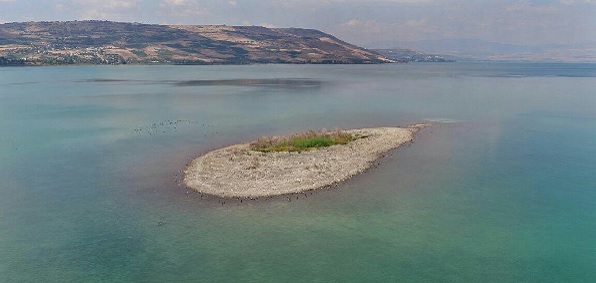Muslim burial rights are eco-friendly
It was historic when the world’s most wanted man, Osama bin Laden, was laid to rest somewhere in the Arabian Sea, which some are calling the ultimate green burial. US officials told news agencies the sea burial followed Islamic customs.
What are Islamic customs for death? Bin Laden’s body was ritually washed, shrouded in a plain white sheet and placed in a weighted bag. Arabic prayers were said over the body, which was then tilted off a flat board from the deck of the USS aircraft carrier Carl Vinson and allowed to slide off into the sea.
While there is no strict time frame for Muslim burials, senior US officials focused on disposing the body within 24 hours, out of respect for the Muslim community, and the decomposing process. This 24-hour rule was not applied for Uday and Qusay Hussein – sons of Iraqi leader Saddam – when in 2003 U.S forces preserved their bodies for 11 days through embalmment.
Since the death Muslim scholars have issued statements for and against sea burials and the ethics behind the mystery of a watery grave.
Egyptian lawyer Montasser el-Zayat said Bin Laden’s sea burial was designed to prevent his grave from becoming a shrine or “a symbol”.
In Islamic tradition, sea burials can be allowed but only in extraordinary cases where the death occurs aboard a ship that is a “long distance from land”. Shiite cleric Ibrahim al-Jabari spoke out that if the death occurs on land, the person “should be buried in the ground… Otherwise this would only be inviting fish to a banquet.”
How Muslims Bury The Deceased
On land
Like Jewish burials, the Muslim funeral rites are simple and to the point. Out of respect for the dead cremations are not allowed. In Judaism cremations are not allowed because they believe in reincarnation. Muslims believe the lifeless body still ‘feels’ and will be brought back to life whole. In Islamic teaching the earth and sea are clean burial sites that do not prerequisite elaborate markings or coffins.
- Close family members close the eyes of the deceased and carry out a ritual ablution called ‘ghusl’ – purifying the body three times with water and perfume.
- The body is wrapped completely with clean sheets, preferably white, known as a ‘kaffan’, similar to coffin.
- Those present make a du`a – an Islamic prayer – and perform ‘salat-ul janazah’, a unique prayer in Arabic for the departed soul.
- The wrapped body is then lowered on its right side into a grave, usually without a box coffin and facing the direction of Mecca. The dug earth covers the grave and a small stone is placed at the head to mark the grave. Earth to earth, dust to dust.
In the sea –
The difference between an earth and sea burial is only in the final resting place. The shrouded body should be lowered into the water in a vessel of clay or with a weight tied to its feet.
If a person dies on a ship and there is no risk of decay, the body is retained on board to be buried in the ground after reaching land. Otherwise, after the Muslim rites are performed, the body is lowered into the sea as far as possible to avoid being disturbed by the sea predators.
Green to the end – the environmental impact of burials
- Water pollution is one of the most commonly cited problems of large cemeteries. As remains are converted to minerals the drainage shifts although drinking sources are not affected negatively.
- Any infective viruses in the deceased can be isolated by surrounding plants. Placing plants with intricate root systems around burial sites is a productive and beautiful way to pull viruses from the soil and counter soil and water contamination, which restricts the movement of microorganisms through the soil.
- If you considered a cremation remember that is uses substantial amounts of energy and fuel, as well as expelling carbon monoxide into the atmosphere – a potent greenhouse gas.
- Sea burials degrade at a slower rate due to the oxygen levels and cooler temperatures.
- With the help of natural microbial processes and corrosion, even an eco-coffin made from recycled material will eventually break down into its basic natural elements.
Osama bin Laden’s sea burial is technically eco-friendly but the decision behind it was more politically driven. Akbar Ahmed, the chairman of the Islamic studies department at American University, told The New York Times that sea burial prevented Bin Laden’s resting place from becoming a powerful shrine.
“If they allowed Osama bin Laden to be buried in Pakistan, his followers would… plant flowers, and women will say the shrine has healing powers, especially among the uneducated. His myth would continue to grow.”
For Muslims, both land and sea burials are means of connecting with nature: a returning to the original source of organic matter. Although sea burials have minimal environmental impact, every burial method has some contribution to the Earth’s equilibrium.
More on greening the afterlife:
Saudi Arabia Has the Highest Road Accident Death Toll in the World
Eco Funeral? Jewish Burials Are Green
“If I Die” Lets Facebook Prepare A Video Clip Launched At Death
Horses: The Silent Victims of Egypt’s Revolution
Why 27 People A Day Die From Air Pollution in Tehran
The Oldest Iranian Is Dying





Melissa McGinnis from Greenopolis TV visits the Persian Gulf and sees recyclable littering the sea side pointing out the need to recycle where ever you are in the world. http://youtu.be/Iv0YIupCcmE
@Murtaza – indeed, the emission of CO2 is far greater than CO in cremation, duly noted!
Appreciated what you had to share here. Like Mariam, I didn’t realize the similarities between Jewisn and Muslim burial traditions.
The picture of the naval burial at sea with A COFFIN did not match the the Moslem procedure described in the lead photograph: “Bin Laden’s body was … shrouded in a plain white sheet and placed in a weighted bag … and allowed to slide off into the sea.”
In the Middle East, on land, the shrouded body would be removed from any carrying box (a.k.a. a coffin) and placed in the grave directly on the earth. Isn’t a re-usable carrying box very eco-friendly? At sea, the weighted bag is needed to send the body down toward the earth at the bottom of the sea.
This was a very informative article, thanks for sharing it! Btw, shouldn’t “carbon monoxide” have been “carbon dioxide”?? 🙂
There are many traditions that Judaism, Islam and Christianity share. Articles that explain our customs are a great way to see what we have in common.
Faith!
@ Zaufishan: Where’s the like button?
Very interesting post, Zaufishan. I didn’t realize how much in common Moslem law has with Jewish law with regard to burials.